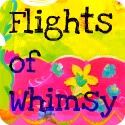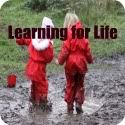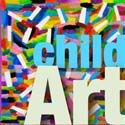Met Oscar, our new classroom pet!
Now, you may be thinking that Oscar has been named after the infamous Oscar the Grouch from ‘Sesame Street’. However, as grouchy as our Oscar may look, and sometimes behave when he is hungry, this is not the case. Oscar is in fact, an Oscar fish (Astronotus ocellatus).
Oscar fish are rambunctious tropical South American fish that are well known for their strong personality and intelligence. Far from being timid fish, they will learn to recognise their owner and eventually accept food directly from their hand. This, combined with their tendency to be playful, has earned them the nickname of ‘aquatic puppies’. Their average life span is between 10-18 years, however, some specimens have been known to live for over 20 years. One of the unique behavioural patterns displayed by Oscars, is their tendency to play dead on occasions. This behaviour is instinctive, and is a tactic used to catch smaller fish in the wild. They may also play dead if they feel threatened by a larger stronger fish, thus demonstrating submissive behaviour.
So what do we feed Oscar? Well, he has a very good appetite and loves:
Earthworms
Bloodworms (frozen in little blocks)
Tropical fish Pellets
&
Insects (eg. crickets)
Even stray fingers that might make their way sneakily into the tank. So it is important to let children know that he may bite!
Oscar came to our preschool as a gift from one of our preschool families (their son is in the photographs below). Their home had become so over stocked with a menagerie of animals that Oscar needed a new home. In Australia, the new EYLF(early years learning framework) and NQF(National Regulations) highlight the importance of connecting children with nature and providing them with opportunities to explore relationships with and discover the interdependence of living things. So naturally we embraced Oscar with open arms! We were so fortunate as he came complete with his tank and stand. Wow!
When Oscar arrived at our centre, we had a group-time devoted to getting to know him. The children were captivated by Oscar and asked many questions (and the questions continue!) A small group of interested children helped me to google some information so that we could answer some of the questions the children had posed, such as: ‘What does he eat?’, ‘Where does he come from?’, ‘Does he bite?’ and ‘Where’s his Mummy?’ Although the children where unable to read the articles we found on the net and required my assistance, the process did convey a very important message to them about being able to read to source information that is of interest to them.
With interest focused firmly on Oscar, I did something that I rarely do, I placed ‘pre-cut’ fish shapes on the collage shelves as a provocation for the children to discover and use as they felt free to do. I usually steer clear of anything that has the ‘sting’ of being to teacher directed but in this instance, the outcome was very rewarding for at least two children.
Several children discovered the fish shapes and used them in the collage area, but the two children featured in these photographs, thought outside the square and saw them as an opportunity to document Oscars appearance through careful observation. Wonderful!
The little boy featured here very rarely engages with drawing and writing materials, but his interest in Oscar created the desire to record some information about him. Fantastic! And perhaps the pre-cut shape in this instance, provided just the right ‘scaffolding’ to move him beyond his aversion to drawing and writing. He carefully noted and observed the markings on Oscars body using stripes and dots and added fins and an eye. Only one eye, so he WAS drawing from observation, not memory!
His fish drawing then came alive as it interacted in conversation with Oscar!
Here are two wonderful stories to read to children that also carry important messages about how to care for their pet fish.
And if you are interested in reading some more about animals in preschool, you can find out about keeping Yabbies and invitiing Wild Action along by following the links.
🙂
























He is kind of cute in a scary way! I think it’s great for those children who don’t have pets at home to learn how to care for a pet in school.
Funnily enough, I have also found that some children who are ‘overwhelmed’ by a blank page respond much better to a pre-cut shaped page. Like you I don’t like to ‘lead’ children down one route in particular but find for some it’s just what they need to discover they ‘can’ draw & make things. Here’s to a long life for Oscar.
He is actually quite cute Kierna. He knows when someone enters the room and gets excited just like a puppy might. Although, I think his mind might be on food rather than someones company. When you look through the glass and chat to him he does appear to be listening. One of our little boys told me that Oscar had told him that he wanted to go to his birthday party. I love that the children feel that they can talk to him. 🙂
I am pleased to meet Oscar at last having heard so much about him! Your children are lucky to have such an interesting specimen to observe and feed…….even if he does nibble little fingers too. I was sad when we could no longer have pets in the classrooms as I grew up with a menagerie myself and not every family has the privilege of having contact with animals (or fish)…..so delighted that this has changed and we again see hamsters, rabbits, fish and turtles in centres.
You are so right Niki. I grew up with pets and love having them in my life now. Some children don’t have this experience at home and it is great if we can offer them the opportunity to engage with animals in the preschool environment. I also like the idea of promoting the concept that all animals aren’t cute and cuddly but all animals deserve our love, repect and care. 🙂
I like the idea of a pet in the classroom! It is fun for the kids and a way to learn how to take care another creature and learn things about it! Thanks for sharing Oscar with us!
True! 🙂
Its an really amazing thing…. They can able to learn something except education this s the first step of proceduce how to care other living things its an good idea ……